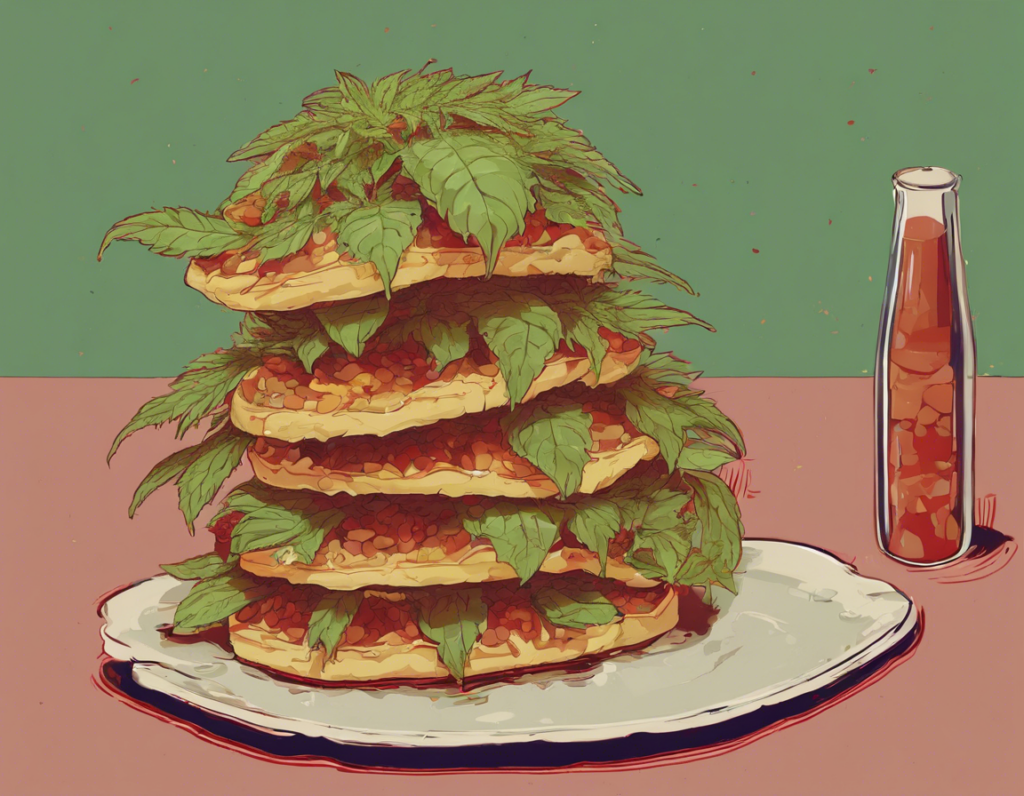The Relationship Between Sativa Cannabis Strains and Hunger Pangs
Cannabis, a widely used recreational and medicinal plant, is known for its various effects on the human body. Sativa is one of the two main species of cannabis plants, the other being Indica. While many people associate Indica strains with inducing hunger, commonly referred to as “the munchies,” there is some debate on whether Sativa strains also have a similar effect. In this article, we will explore the relationship between Sativa cannabis strains and hunger pangs.
Understanding the Differences Between Sativa and Indica
Before delving into the effects of Sativa strains on appetite, it’s essential to understand the fundamental differences between Sativa and Indica cannabis plants.
-
Sativa: Sativa strains are known for their energizing and uplifting effects. They are often consumed during the day because they can boost creativity, focus, and productivity. Sativa plants typically have higher levels of THC (tetrahydrocannabinol), the psychoactive compound in cannabis, which is responsible for the “high” sensation.
-
Indica: On the other hand, Indica strains are famous for their relaxing and sedating properties. They are commonly used in the evening or at night to unwind, alleviate stress, and promote sleep. Indica strains usually contain higher levels of CBD (cannabidiol), a non-intoxicating compound that offers various therapeutic benefits.
The Science Behind Cannabis and Appetite
Cannabis, regardless of whether it’s a Sativa or Indica strain, interacts with the body’s endocannabinoid system. This system plays a crucial role in regulating various physiological processes, including appetite, metabolism, pain sensation, mood, and memory.
The primary psychoactive compound in cannabis, THC, binds to CB1 receptors in the brain and body, leading to a cascade of effects, including the modulation of hunger and satiety signals. When activated, CB1 receptors can stimulate appetite and increase food intake, hence the phenomenon of the munchies commonly associated with consuming cannabis.
Does Sativa Cause Hunger Pangs?
While Indica strains are more notorious for stimulating appetite, Sativa strains can also have a similar effect, albeit to a lesser extent in some individuals.
-
Variability in Effects: It’s important to recognize that the effects of cannabis, including its impact on appetite, can vary greatly from person to person. Some individuals may experience increased hunger after consuming a Sativa strain, while others may not notice any significant changes in appetite.
-
THC Content: The THC content of a Sativa strain can influence its effects on appetite. Higher THC concentrations are more likely to trigger hunger pangs compared to strains with lower THC levels.
-
Terpene Profile: Terpenes, the aromatic compounds found in cannabis, also play a role in shaping the plant’s effects. Certain terpenes, such as beta-caryophyllene and humulene, have been associated with appetite suppression, which may counteract the hunger-inducing properties of THC.
-
Individual Sensitivity: Factors like individual tolerance, metabolism, and overall health can influence how cannabis affects appetite. Some people may find that Sativa strains have a more pronounced impact on their hunger levels, while others may not experience any notable changes.
Tips for Managing Cannabis-Induced Hunger
If you find that consuming Sativa strains leads to increased hunger pangs and you’re looking to manage this effect, here are some tips to consider:
-
Mindful Eating: If you do experience the munchies after consuming cannabis, opt for healthy, nutrient-dense snacks to satisfy your cravings rather than indulging in high-calorie junk food.
-
Stay Hydrated: Drinking plenty of water can help curb your appetite and keep you hydrated, especially if you’re prone to snacking after using cannabis.
-
Engage in Physical Activity: Engaging in light exercise or physical activities can not only distract you from food cravings but also help boost your metabolism.
-
Choose Strains Wisely: Experiment with different Sativa strains that have lower THC levels or a more balanced THC to CBD ratio to see if they have a milder impact on your appetite.
-
Consult a Professional: If you have concerns about how cannabis is affecting your appetite or overall well-being, consider consulting a healthcare provider or a cannabis professional for personalized advice.
Frequently Asked Questions (FAQs)
1. Can Sativa strains help with appetite suppression?
While Sativa strains are more commonly associated with boosting energy and focus, some individuals may find that certain strains help suppress their appetite, especially those high in specific terpenes like beta-caryophyllene.
2. Are there specific Sativa strains known for causing hunger pangs?
There is no definitive list of Sativa strains that consistently induce hunger pangs, as individual reactions can vary. However, strains with higher THC content are more likely to stimulate appetite.
3. How long do the appetite-inducing effects of Sativa strains typically last?
The duration of appetite stimulation after consuming a Sativa strain can vary from person to person. In general, these effects may peak within the first hour or two and gradually subside over the following hours.
4. Can combining Sativa and Indica strains influence appetite differently?
Mixing Sativa and Indica strains can lead to a combination of effects, including changes in appetite. Some individuals may find that certain blends mitigate the hunger-inducing properties of either strain.
5. Are there non-psychoactive alternatives for appetite control using cannabis?
For individuals seeking appetite control without the psychoactive effects of THC, exploring CBD-dominant cannabis products or isolated CBD extracts may offer potential benefits without the risk of increased hunger.
In conclusion, while Sativa strains are generally known for their stimulating and uplifting effects, they can also influence appetite in some individuals. Understanding the variability in how cannabis affects hunger pangs, along with implementing mindful consumption practices, can help you manage the potential impact of Sativa strains on your appetite. Remember, listening to your body and adjusting your cannabis consumption based on your unique responses is key to maximizing the benefits of this versatile plant.
